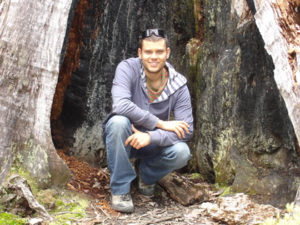
James Camac
School of Botany, The University of Melbourne, Victoria, Australia
Received the Australian Flora Foundation Young Scientist Award for his poster at ESA2010, the Ecological Society of Australia Conference on 6 – 10 December 2010 at the Manning Clark Centre, ANU, Canberra.
James Camac1, Carl-Henrik Wahren2, Dick Williams3, Ary Hoffmann4 & Peter Vesk1
1School of Botany, The University of Melbourne, Victoria, Australia (Email: j.camac@pgrad.unimelb.edu.au),
2 Research Centre for Applied Alpine Ecology, La Trobe University, Victoria, Australia
3CSIRO Ecosystem Sciences, Northern Territory, Australia
4Centre of Environmental Stress and Adaptation Research, The Universityof Melbourne, Victoria, Australia
Climate change can influence species responses directly through physiological changes (e.g. growth), but also indirectly by altering disturbance regimes (e.g fire). Fire is known to shape the distribution and composition of many plant communities, ecosystems and biomes. Researchers and managers must now consider whether changes in disturbance regimes act synergistically or antagonistically with climate change. Here we examine the interactive effects of warming and fire on the floristic composition of dominant alpine growth forms on the Bogong High Plains, Victoria. Our key questions were do the effects of fire and warming result in floristic change? If so, what growth forms are the winners and losers? We addressed thesequestions by passively warming vegetation burnt by the 2003 bushfires using Perspex open top chambers established in 4 sites (2 burnt; 2 unburnt) as part of the International Tundra Experiment (ITEX). Preliminary analyses have shown that the post-fire recovery of alpine vegetation is strong. The response to warming was idiosyncratic, both with respect to species and site. The canopy height of various growth forms was enhanced by warming, however, there was no evidence of significant declines in species richness or cover in response to warming and fire. Alpine vegetation appears to be resilient, in the short term, to the effect of warming and fire.
